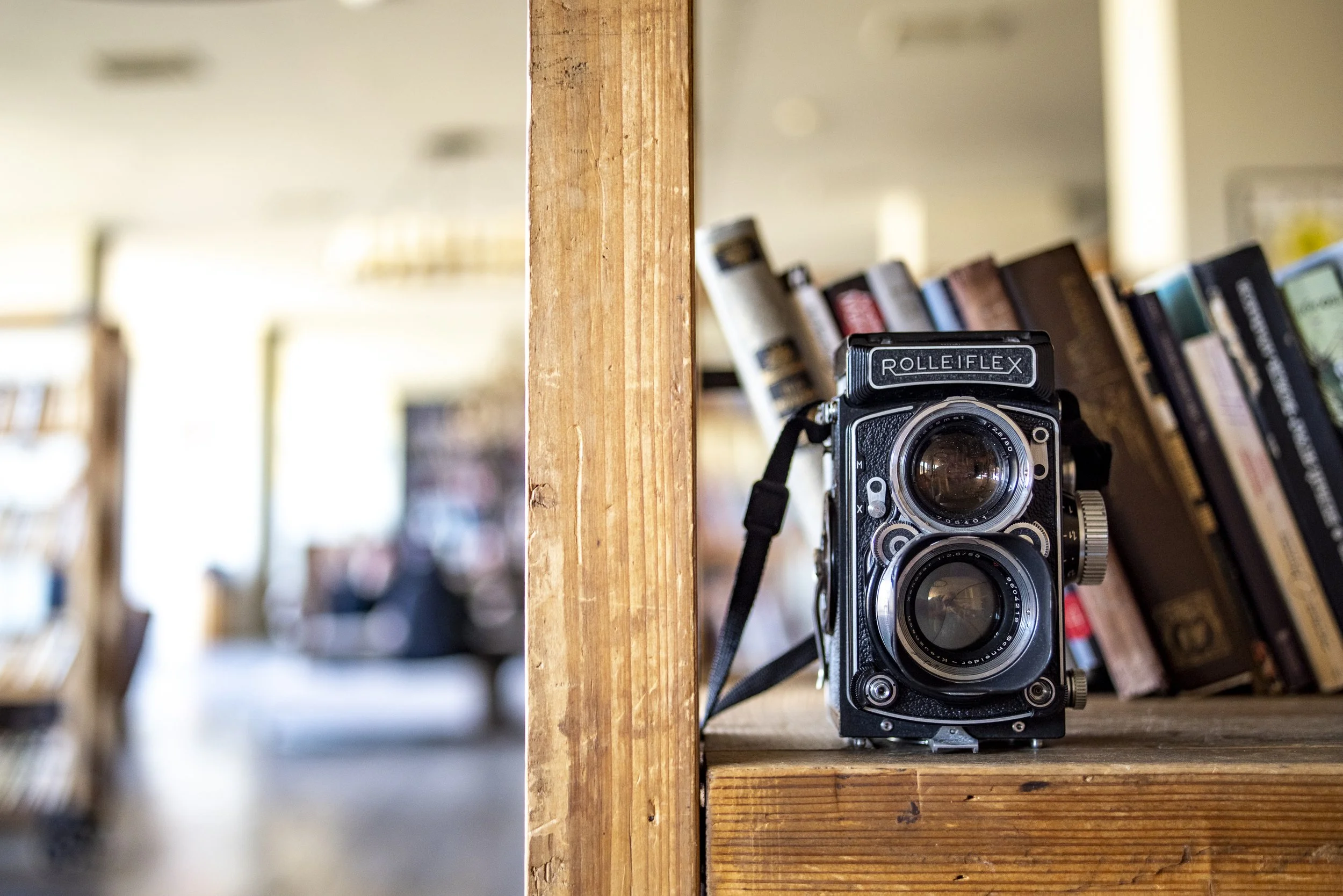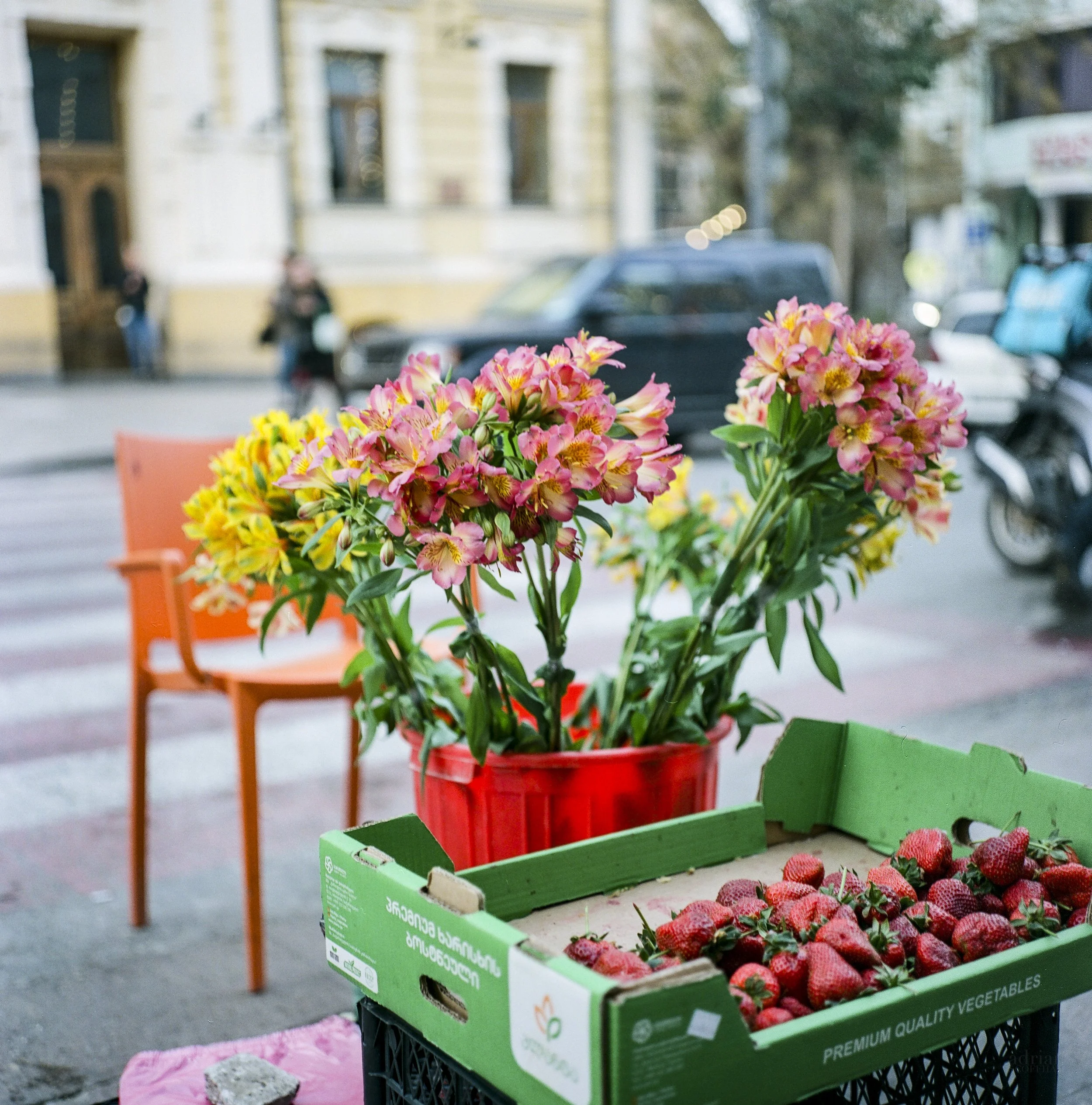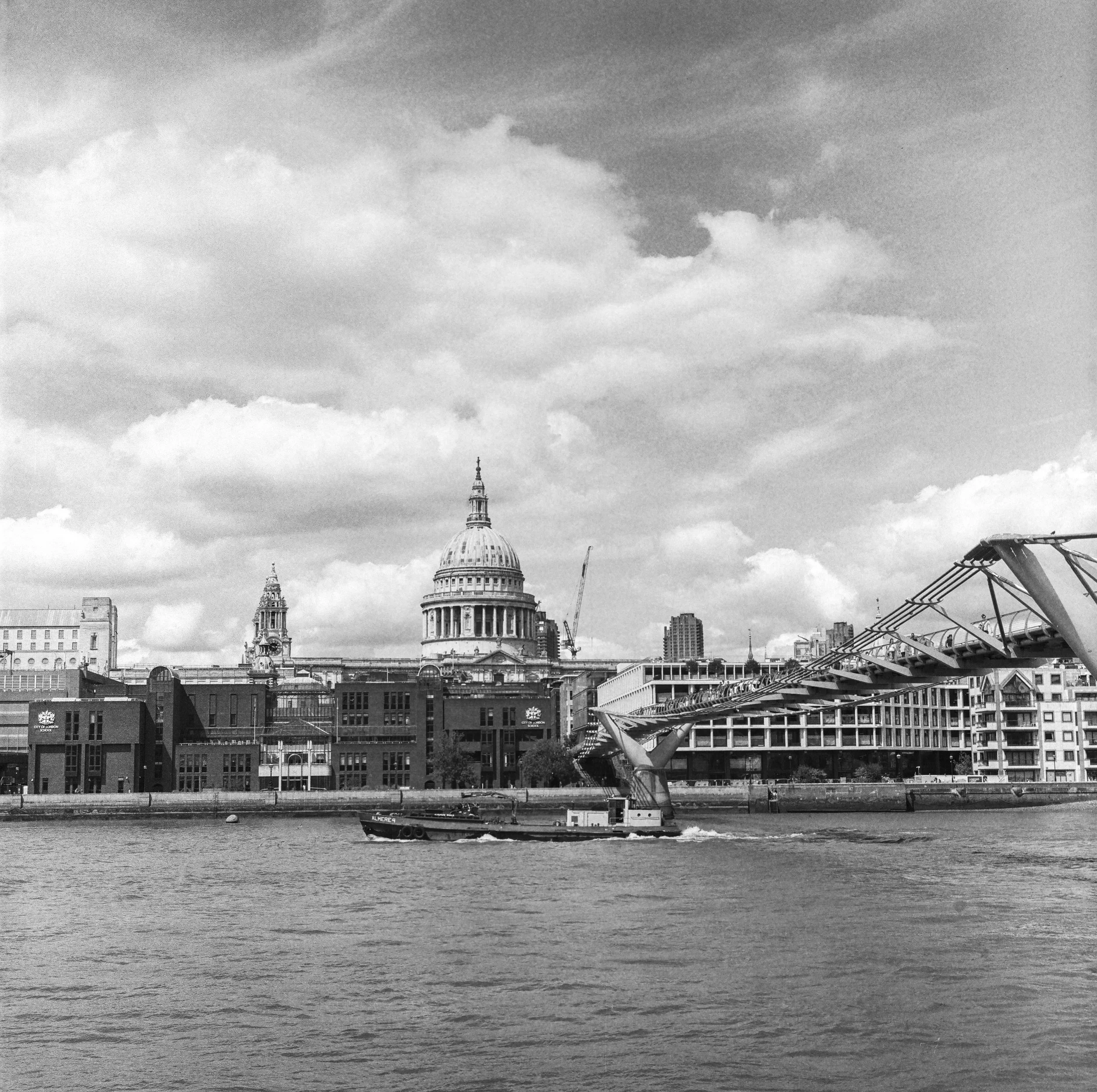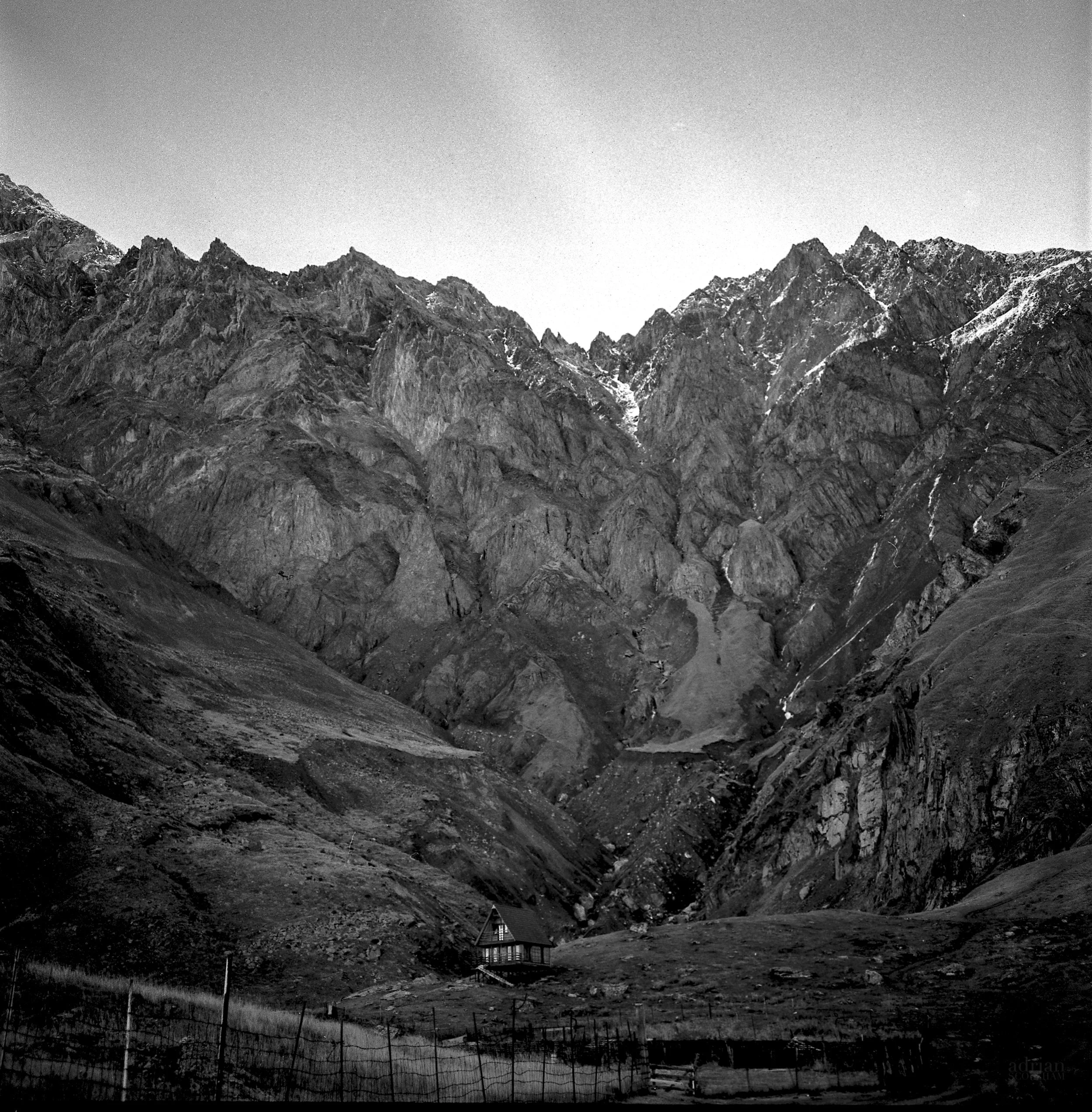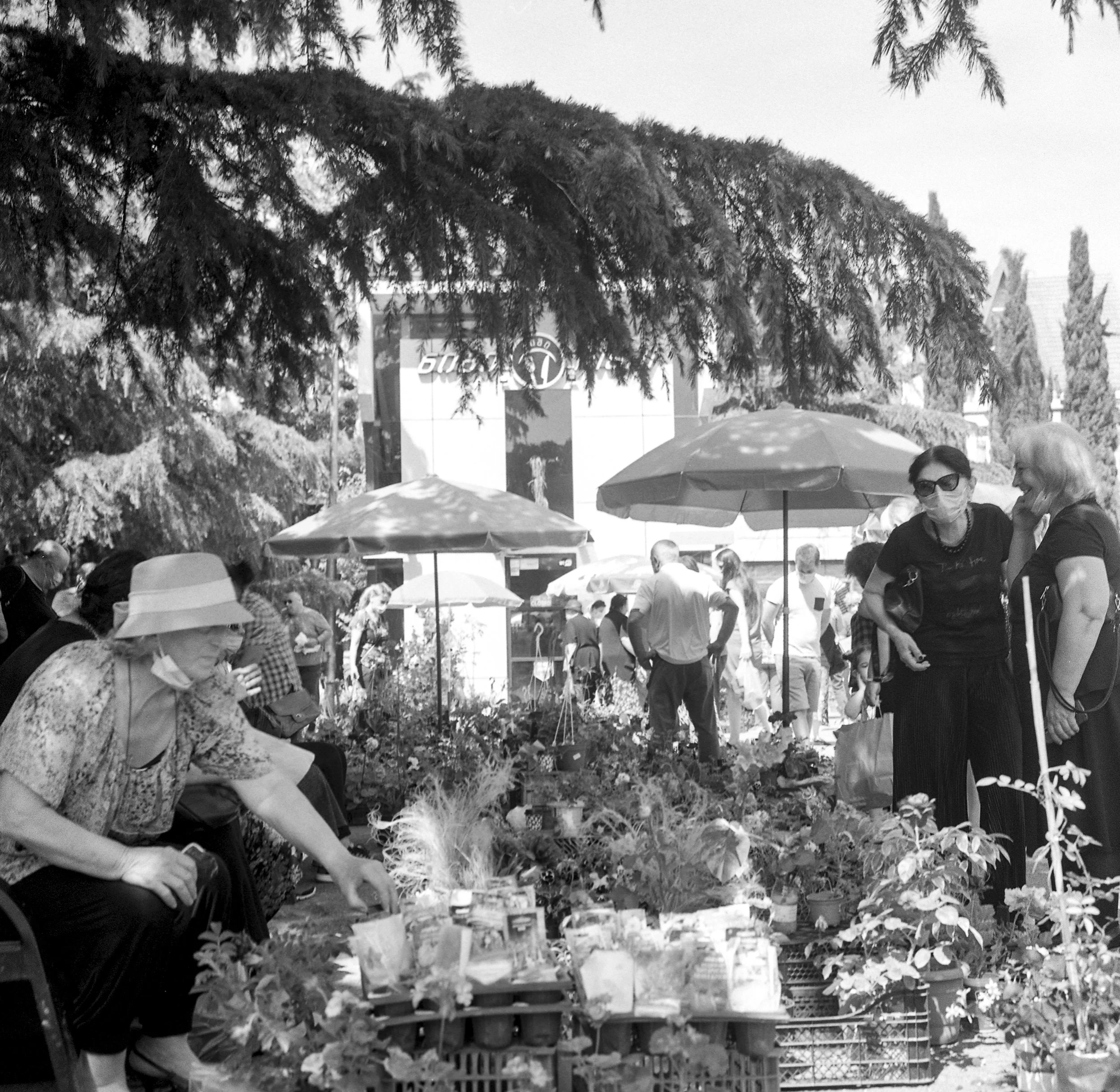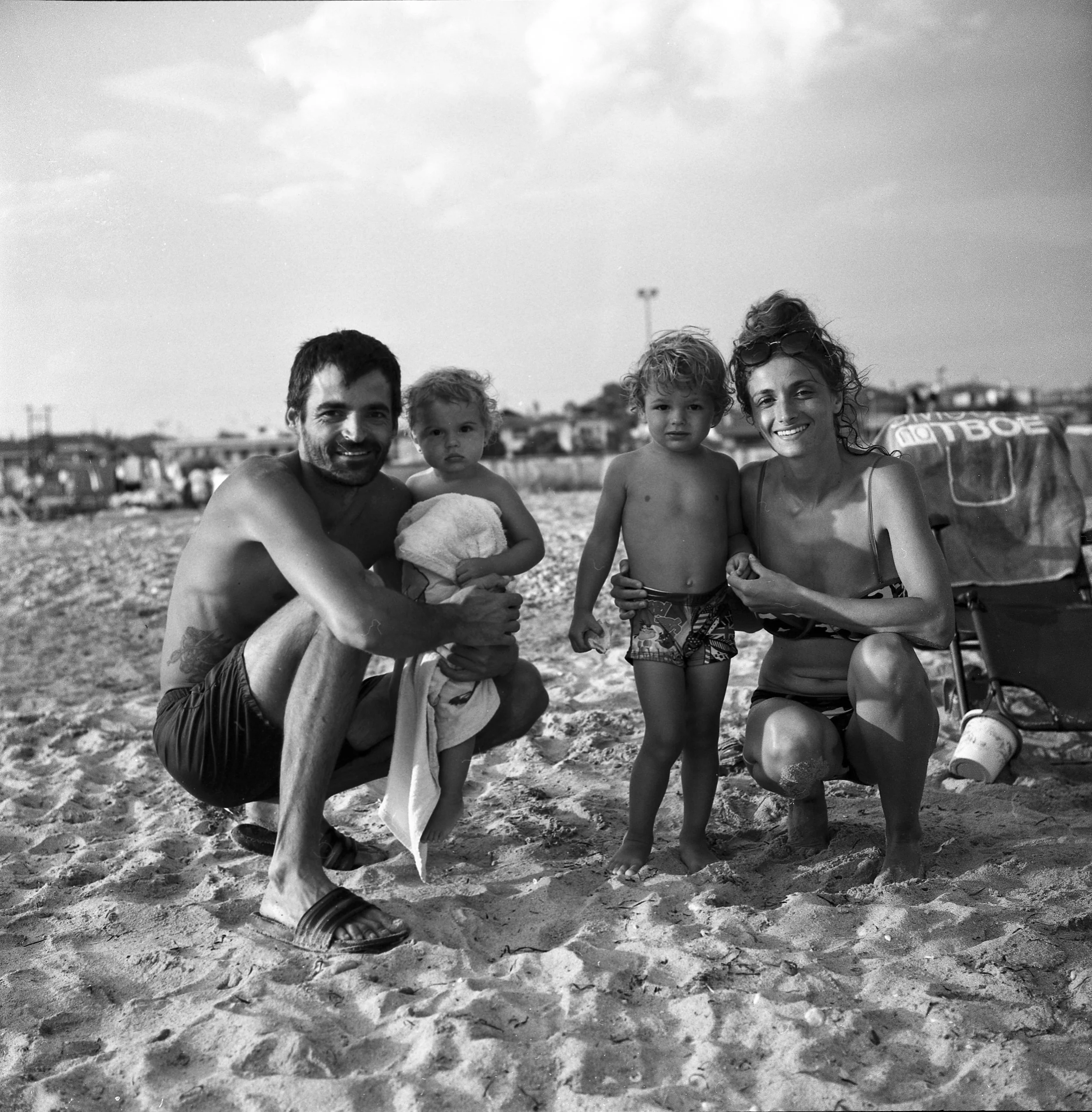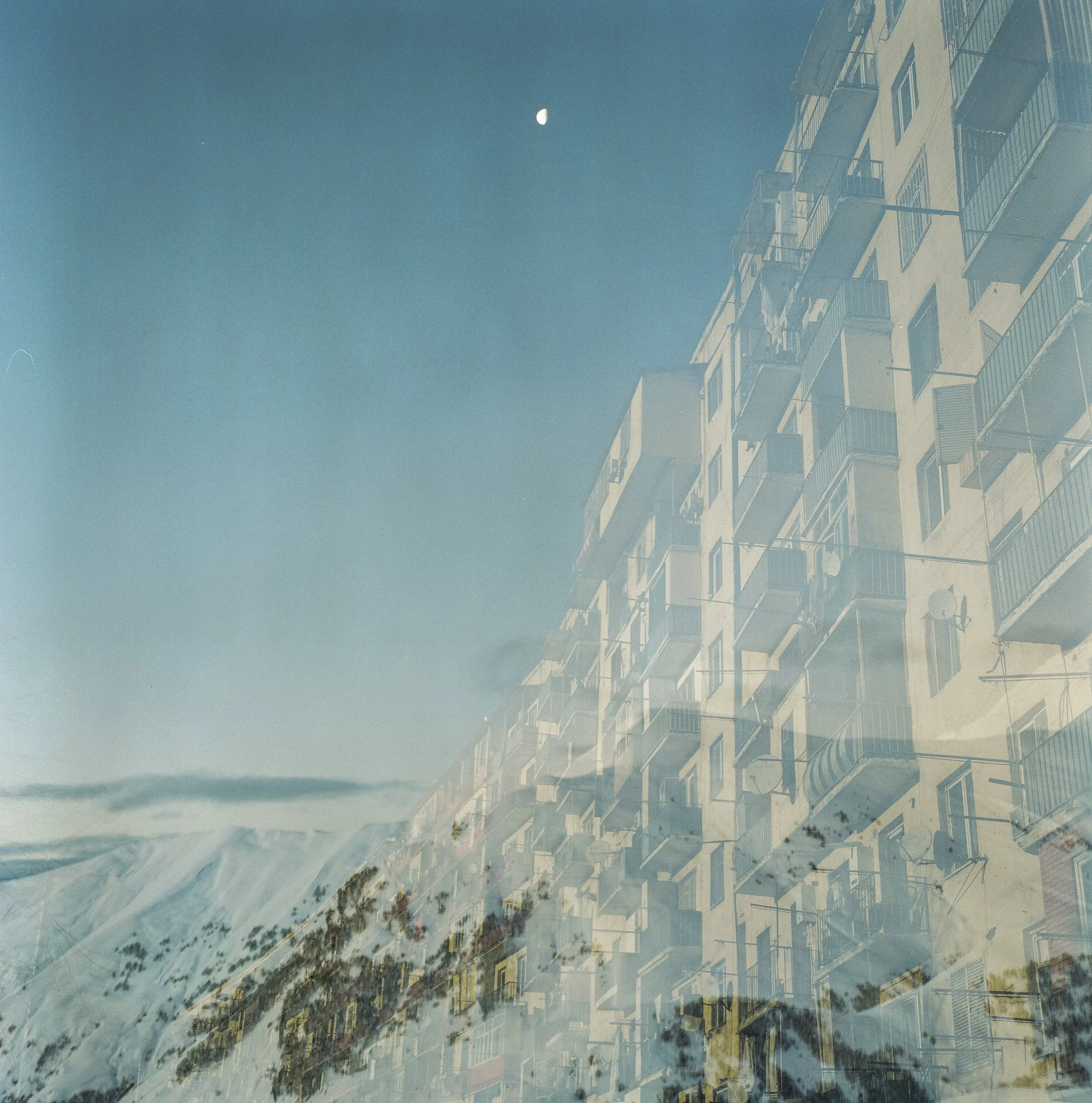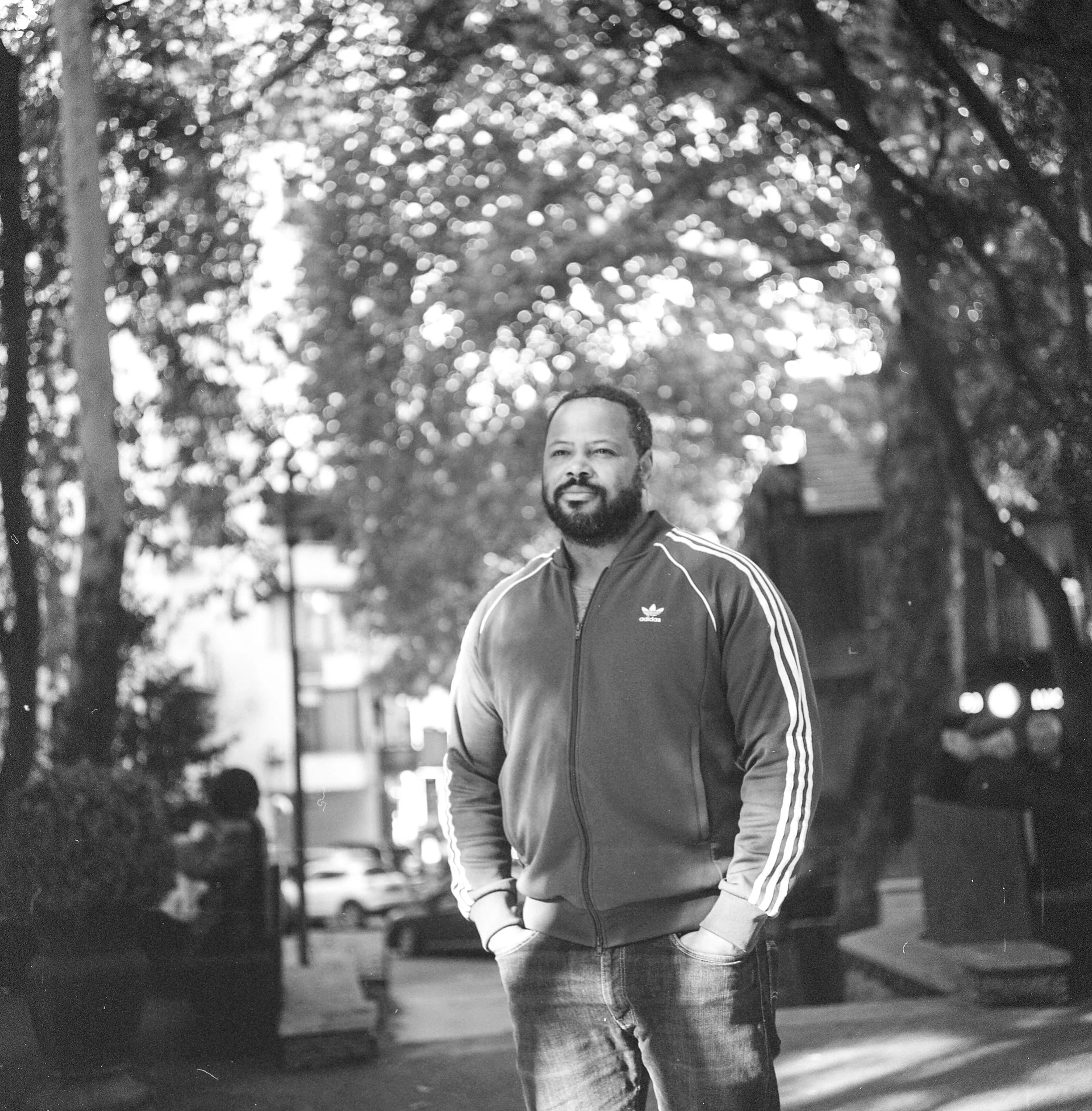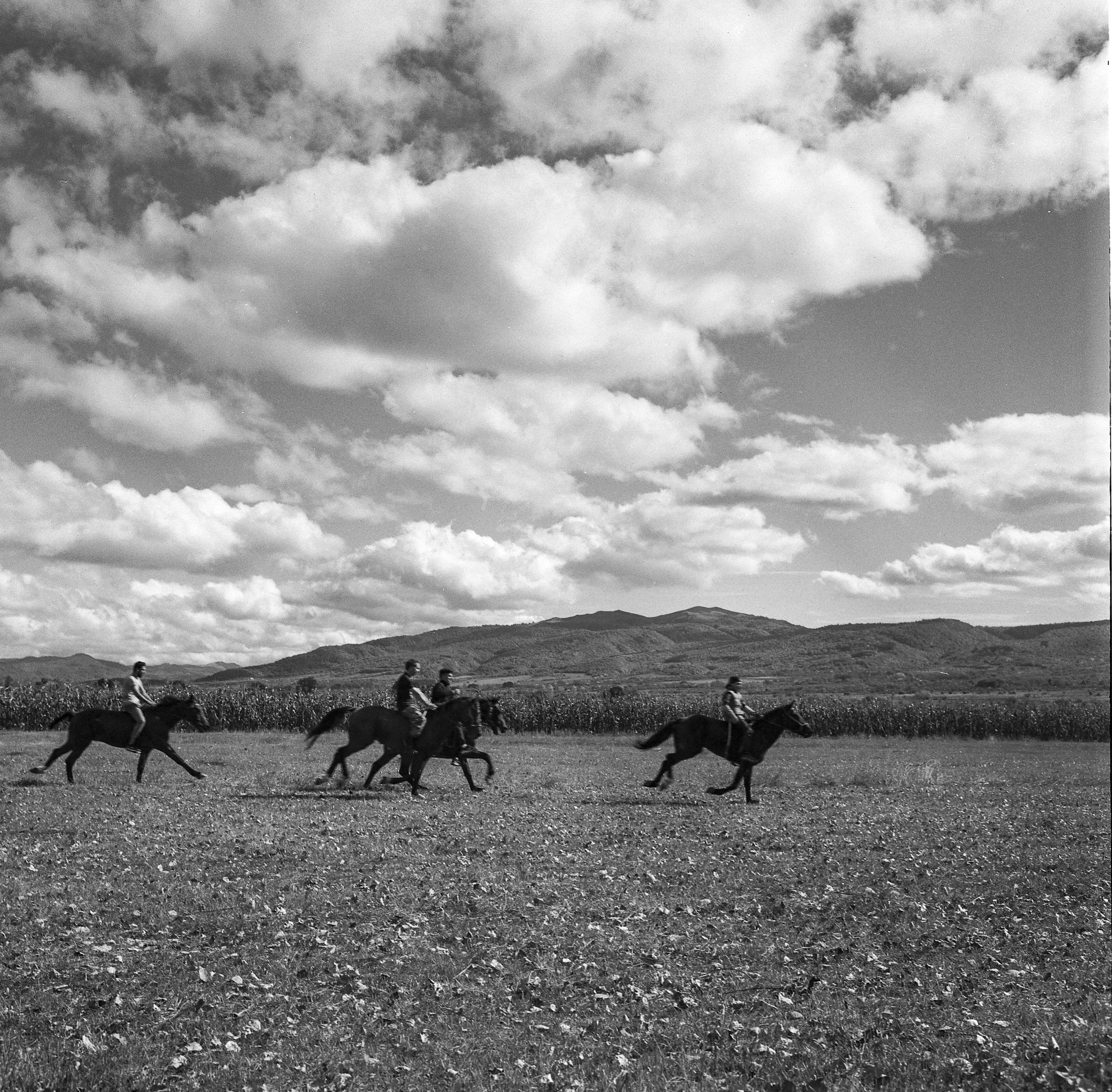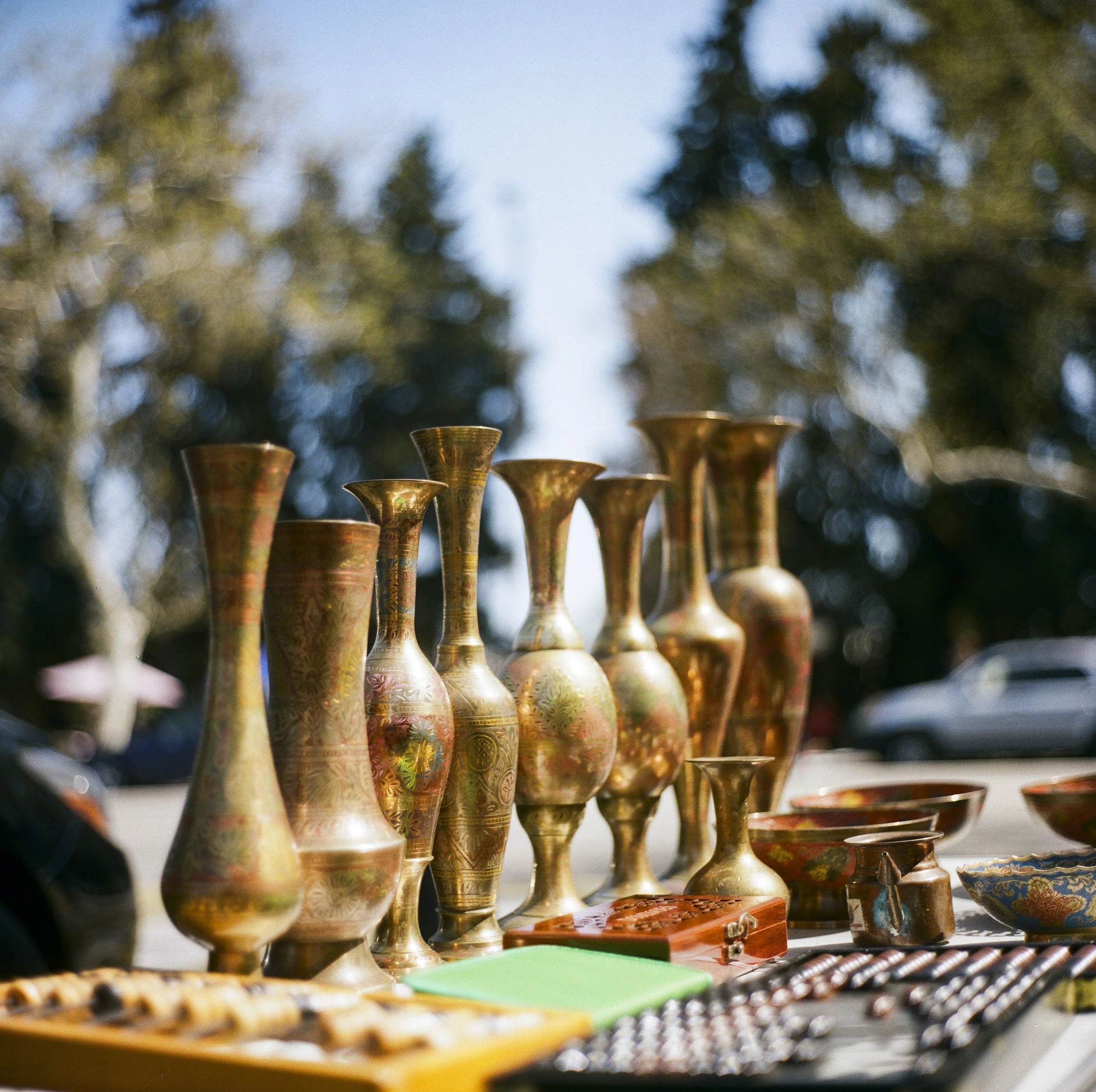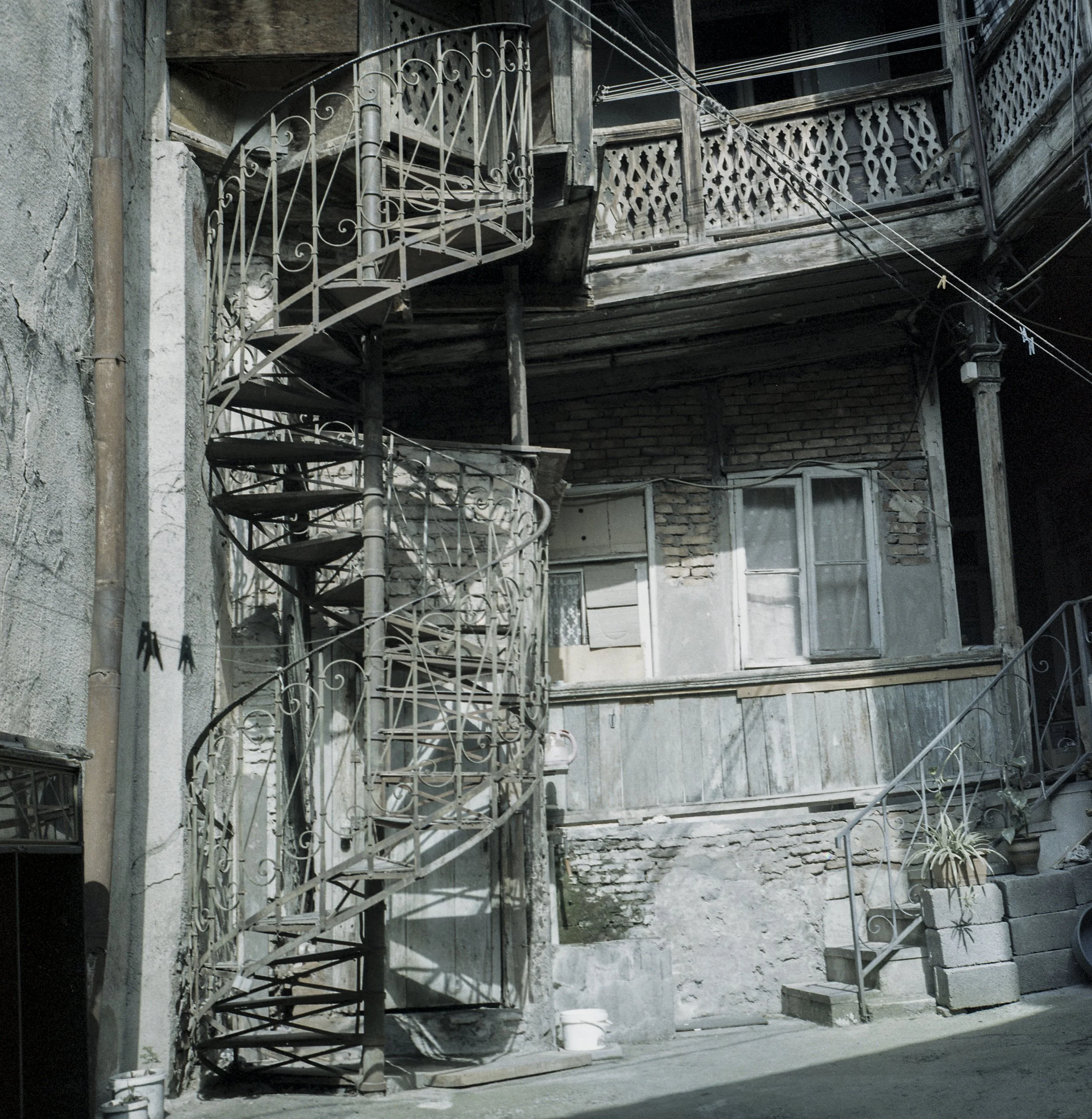The Ultimate Medium Format Cameras -Rolleiflex
Rolleiflex 2.8C chilling at Rooms Hotel Kazbegi (Photo Pentax K1)
Once you’ve got the film-photography bug then there will come a point where you start looking at medium format images and wondering how you can get your photos to look like that… with 35mm cameras there are some lens options that could get close to the image separation and bokeh quality - but you’re likely looking at very expensive fast-aperture glass to achieve that.
Cut Flowers & Strawberries in Tbilisi - Rolleiflex 2.8C with Kodak Ektar 100
At the end of the day we’re dealing with physics and when a negative is 60mm x 60mm as opposed to 36mm x 24mm then you’re talking about a huge leap up in quality and now we have the lovely fast emulsions that are available today we don’t need to be too concerned with the relatively modest light-gathering capabilities of F3.5 or F2.8 lenses because a 400ASA film will manage just fine in most daylight conditions and if you shoot a twin lens reflex camera there aren’t any vibrations from mirror-slap.
St Pauls Cathedral across the Thames - Rolleiflex 3.5E with Kodak Tri-X 400
The medium format camera I heartily recommend is the Rolleiflex, a wonder of robust German engineering and precision that comes in surprisingly compact considering the negative size. I’ve been through the East German Pentacon Six earlier in my career and the Horizon 202 (ok it uses 35mm film) I’ve owned the Hasselblad 500 CM and the Bronica ETRS - I landed on the Rolleiflex 3.5 and 2.8 models through the recommendation of a friend who’d shot with a wide variety of medium format cameras.
The Rolleiflex works well in minus temperatures - she’s fully mechanical
The Pentacon Six frustrated me endlessly, GDR quality standards were not great and the camera had a nasty habit of tearing film - as far as I remember it was bought by a guy in Japan - maybe he got it serviced so it works, but I have my doubts. These reservations extend to Kiev medium format cameras - they may appear tempting but they have a habit of going wrong. The Hasselblad is a different beast, much better built and with a wonderful selection of lenses, it’s truly a joy to use and remains a gold standard in mechanical medium format cameras. You do have to be careful how you handle the winding on and backs because if you get it wrong then things suddenly stop and you’re left googling how to reset the body and back. This brings us to the Rolleiflex, quite simply the most robust mechanical medium format camera - as I know this because we unfortunately tested it… My 3.5E took an involuntary flight out of a camera bag looping up in the air and landing on it’s head on tarmac. There was significant damage - but it was possible to get her repaired by a genius camera technician in Italy - since then she hasn’t missed a beat.
Old Tbilisi Balconies Rolleiflex 2.8C with Lomo Metropolis
Before I got into Rolleiflex I did about 3 months of research checking up on photos taken with various versions to get some feel for the look that I prefer. There are some excellent resources online and many experts have created generous reviews that will help you to form some opinions. It’s widely held by many that they prefer the Carl Zeiss Planar lenses - now ordinarily I’d be straight after that lovely Zeiss glass because I shoot Zeiss lenses on my Nikon film cameras and also Zeiss on my Fuji digital - so it’s fair to say I have a keen appreciation of the Zeiss look and the benefits of their proprietary coatings. In Rolleiflex world however I tend to prefer the Schneider-Kreuznach Xenotar lenses… they retain a lovely sharpness of the in-focus elements of the photograph whilst then developing a lovely and subtle drift into the out-of-focus areas… to me the look created here is really organic and natural-feeling but of course I appreciate that these things are subjective and you’ll want to compare Planar and Xenotar photos to develop your taste and decide which is for you. I should add that when choosing a camera you should look at the overall condition and the way a camera has been treated and serviced because when it comes to vintage cameras that is key. My cameras are 1952 and 1957 respectively making them truly old-timers.
The Greater Caucasus Mountains at Stepantsminda - Rolleiflex 3.5E with Kodak Tri-X 400
May Roses Cascade in Tbilisi Old-Town - Rolleiflex 2.8C with Fuji Pro 400H
There are two primary types of Rolleiflex that you’ll need to navigate and the difference is in the lens. You can either have the faster, bigger and heavier 80mm F2.8 lensed model or the slower, smaller, lighter 75mm F3.5 lensed model. Having both I’ll make a few observations about the pros and cons; The F2.8 lens is a little tighter, this makes it slightly better for portraiture and human interest, it’s also a touch faster which will give better subject separation and allow you to have enough light in borderline situations. The 2.8 is however a lot heavier and the camera doesn’t balance as nicely or handle as well as the 3.5 model. The body of the 2.8 is also slightly larger. The F3.5 lens is that little touch wider at 75mm - sometimes that can feel like it makes a difference when you’re shooting - I find that I prefer this for street scenes, architecture and general photography. I far prefer the balance and handling of the 3.5 and I appreciate the compactness of the body and lens combination.
Green Bike on a Tbilisi Balcony - Rolleiflex 2.8C with Fuji Pro 400H
Isani Flower Market, Tbilisi - Rolleiflex 3.5E with Ilford HP4
Further differences can be found by the model designation - the main ones you’ll find are either C, E or F models - I have a 2.8C from 1952 and a rare body called a K4I from 1957 which was sold to me as a 3.5E which I’m told was the body produced just before the introduction of the much-venerated F models. The C models have one major advantage over the later D, E & F models which is that it has a 10-bladed aperture - this means that as you stop down you still get circular-shaped bokeh rather than the pentagrams of the later 5-bladed aperture models. I should note that the C models use the more archaic shutter speeds such as 1/25 1/50 1/100 and to get 1/500 you have to not cock the shutter with the wind-on level but select the 1/500th which is a spring-loaded “hidden speed” that can only be accessed in the way I describe. The more modern bodies have speeds we’re used to today such as 1/15 1/30 1/60 1/125 - I find that the old system slows me down a bit as I use a Sekonic L308 light meter and that uses the modern speed settings.
Timeless travel photos are what you’ll get with the Rolleiflex 2.8C and Fuji Pro 400H
Family beach portrait with the Rolleiflex 3.5E and Kodak Tri-X 400
For the image purist if you can get a C model and have it professionally overhauled then that would be a fine choice - I’m lucky that my 2.8C model was overhauled by Magicflex in Berlin which means it’s pretty much now the Rolls-Royce of 2.8C Rolleiflexes, my 3.5 is much more of a user-condition camera but my Italian camera technician noted that the lenses and coatings are in optimal shape - which is what I care about most. It can be nice to have a camera in a condition where you’re not so concerned if it gets a little scrape. My advice in terms of condition and usability would be to look out for E and F models and my suggestion would be to favour the F3.5 lens due to the better handling and more compact package that can be the difference between taking the camera with you or not. I’d say that the 3.5 is one of the best medium format travel cameras you could wish to have - you may also find that she’s a wonderful conversation-starter because many people have never seen a camera like this and they get curious when they see the pretty twin-lensed face of a Rolleiflex.
The Mysterious Austrian Alps in a Storm - Rolleiflex 2.8C with Kodak Portra 400
Double Exposure Tbilisi/Gudauri - Rolleiflex 3.5E and Kodak Ektar 100
Environmental Portrait with Olajide in Vake, Tbilisi - Rolleiflex 2.8C and Ilford HP4
A minor consideration I’ve negated util this point is the waist-level finder - you compose the image on a ground-glass screen that you look down into - due to the fact that the image comes from the viewing lens through one mirror what you see in the finder is reversed - it does take a little getting used to and if it really irritates you you can get an eye-level finder for the F models but in all honesty stick with the waist level finder, it makes you more invisible and slowing down to get a shot right is a beautiful experience.
Sunrise over Gudauri, Georgia with Rolleiflex 2.8C and Kodak Portra 800
Accompanying this post you’ll find some photos I’ve taken over the past few years with the 3.5 and 2.8 - films used include Kodak Tri-X 400 Kodak Ektar 100 Fuji Pro400H Lomo Metropolis, Kodak Porter 400 & 800 and Ilford HP4. Personally I love the colours, tones and contrast I get from the Rolleiflexes - the look is sumptuous and sometimes nostalgic - for me the perfect cameras for making fine art prints.
Trialeti Horse Racing, Georgia - Rolleiflex 2.8C with Kodak Tri-X 400
Kala Blue Balconies Old Tbilsi
Wisteria in Tbilisi
Avlabari Courtyard
Katya in Chugureti, Tbilisi
Mount Kazbeg in Autumn
Courtyard of Hotel Samba, Tbilisi
Vases at Dry Bridge, Tbilisi
The little black cat, Kala, Tbilisi
Border Castle between Croatia & Bosnia
Wrought Iron Stairs, Old Tbilisi
Der Acherkogel, Austria
Sunrise over Gudauri, Georgia
Trees for New Year, Vera, Tbilisi
Alpine Flowers, Tirol
Volga with high-tech handbrake
Patina,, Sololaki, Tbilisi
The Tower of London & City of London

